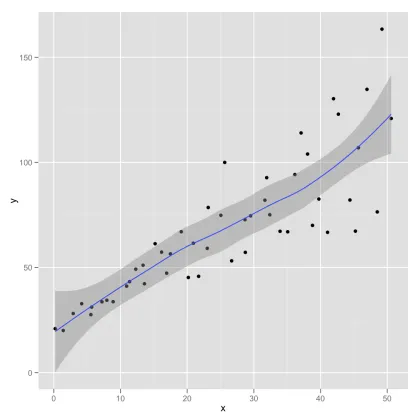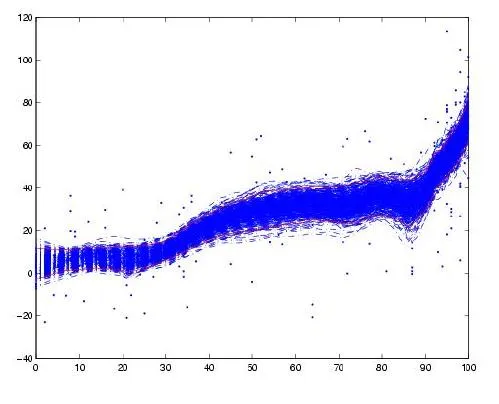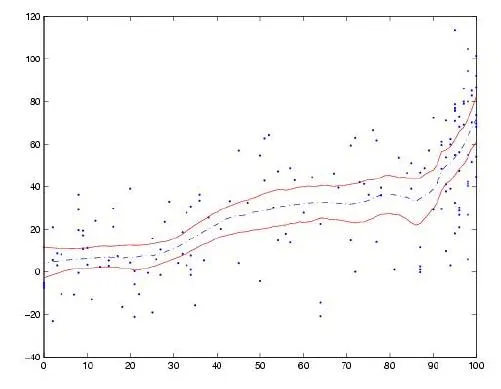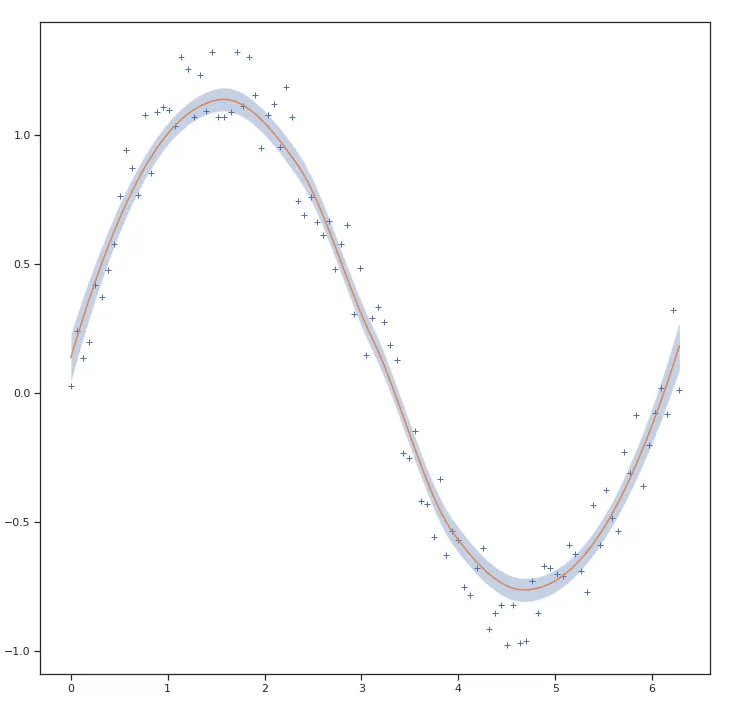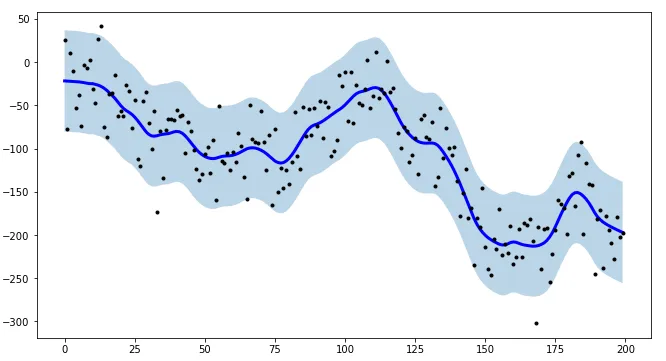我该如何在Python中计算LOWESS回归的置信区间?我想将这些置信区间作为阴影区域添加到使用以下代码创建的LOESS图中(除了statsmodels之外的其他软件包也可以)。
import numpy as np
import pylab as plt
import statsmodels.api as sm
x = np.linspace(0,2*np.pi,100)
y = np.sin(x) + np.random.random(100) * 0.2
lowess = sm.nonparametric.lowess(y, x, frac=0.1)
plt.plot(x, y, '+')
plt.plot(lowess[:, 0], lowess[:, 1])
plt.show()
